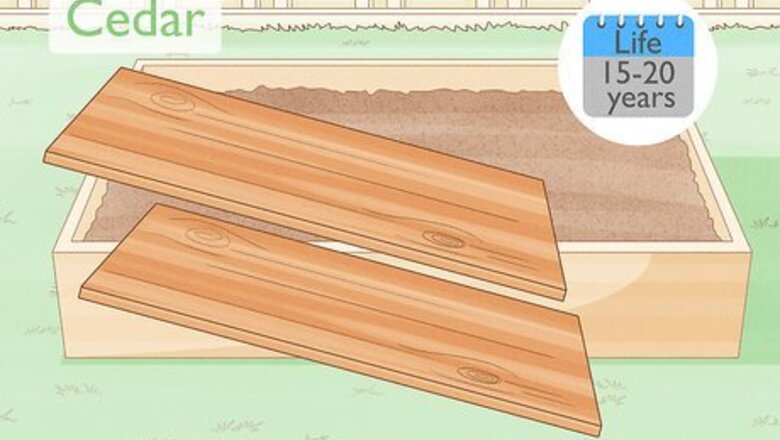
views
Cedar
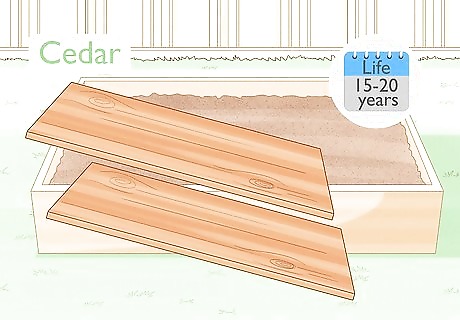
Choose cedar if you're looking for the longest-lasting option. Cedar is a common lumber option if you live on the West Coast, but you may be able to find it elsewhere although it can be quite expensive. It's one of the most durable types of hardwood—it can last 15 to 20 years! Cedar is also rot-resistant and pest-resistant, so it's great for the garden.
Black locust
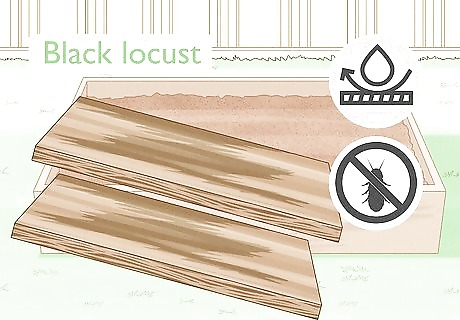
Black locust beds can last for decades since the wood is rot-resistant. It's a sturdy hardwood that resists moisture, humidity, insects, and fungal infections. Because it's a hardwood, it can be pricey, but you won't need to replace your raised garden beds for decades.
Cypress

Look for cypress if you can't find cedar, but want similar durability. Cypress has some rot-resistant and pest-resistant properties, but it doesn't last as long as hardwood. It does have a slightly sour smell and can cause skin sensitivity in some people. However, it's affordable and sturdier than other softwoods like pine.
Spruce
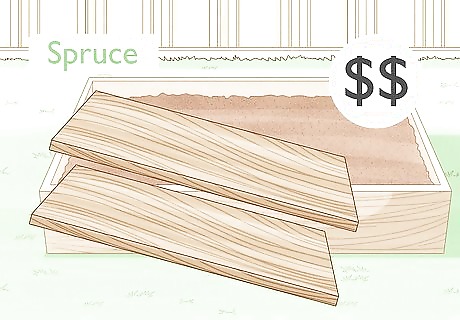
Spruce is an affordable wood that's a bit sturdier than other softwoods. This wood is easy to handle, lightweight, and long-lasting. This can make spruce a bit more costly, but it won't break your budget.
Douglas Fir

This is a good budget option that's pest- and rot-resistant. While Douglas Fir is a bit more expensive than other softwoods, it's also really durable. It typically lasts longer than other softwoods, so it's a good choice if you know you want to use the beds for about a decade before replacing them.
Redwood
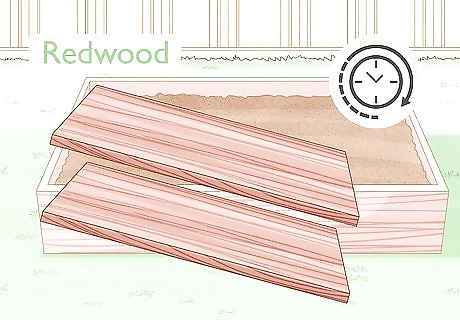
Redwood is a heavy, long-lasting hardwood, but it can be hard to find. It's also more common on the West Coast. Just like cedar, redwood has pest-resistant and rot-resistant qualities, so your raised garden beds will last for years. Unfortunately, since redwood is harder to find, it's often more costly than cedar.
Oak
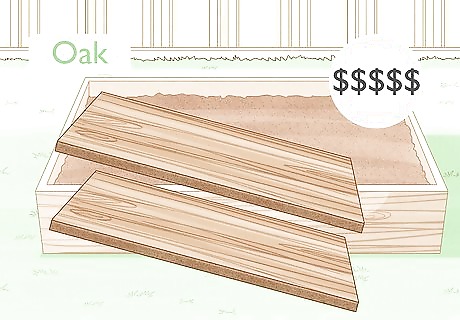
This is an expensive option, but it's beautiful and long-lasting. Since oak is a dense hardwood, some people find it difficult to drill into. However, oak is more rot- and -insect resistant than softwood and it holds up much longer. Oak also grows more slowly than other wood types, so it can be difficult to source. Be sure to search for sustainably harvested oak to prevent deforestation.
Pine
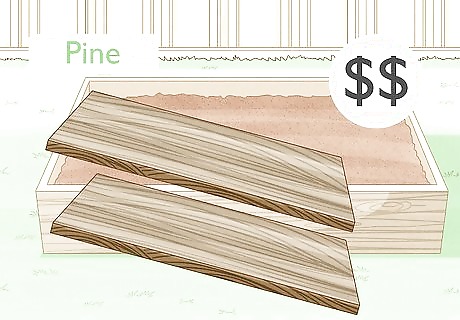
Pine is a budget-friendly, easy-to-find option for a raised bed garden. If you're having a hard time finding cedar or redwood, you'll probably have no problem picking up pine from the lumber yard. Since it's a softwood, it's light and easy to work with. Plus, it's a really affordable wood. The only drawbacks are that it will break down after a few years and it's not rot- or pest-resistant.
Plant-safe pallets

Upcycle wooden pallets that are chemical-free for a cheap raised bed. It's tempting to use free pallets that you find around town, but be cautious. The pallets will break down quickly and some are treated with a pesticide (methyl bromide) that you don't want coming into contact with your garden soil. To ensure a pallet is plant-safe, look for the International Plant Protection Convention (IPPC) logo. This means the pallet was heat-treated instead of chemically treated.
Non-pressure-treated wood
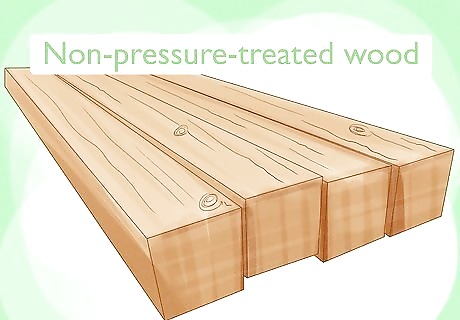
Choose lumber or old wooden boards that are chemical-free. The pressure-treatment process involves treating wood with chemicals to make the lumber pest-resistant or rot-resistant. Unfortunately, chemicals like arsenic can leach into your ground soil, so only use products that are not pressure-treated, especially if you're planning to grow organic fruits or veggies. If you're not sure if the wood was pressure-treated, line the inside of your garden bed with heavy plastic, so the soil doesn't come into contact with the wood.
Composite wood
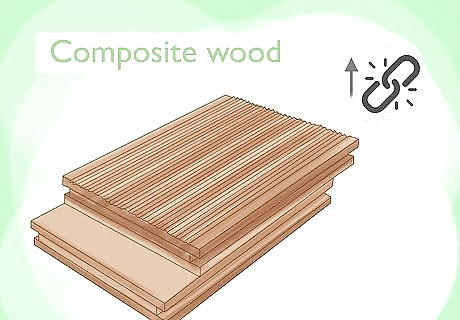
Go with this material if you want really long-lasting raised beds. Composite wood is made of a mix of wood fiber, wood flour, and thermoplastic resin, so it's incredibly durable. Since it's not completely made of wood, it's rot-proof and pest-resistant. It's a good option if you don't plan on moving or replacing your garden beds. Composite wood also won't warp or break down over time although the color can fade. While making raised beds, make sure they are not too wide. A width of 3 feet or 40 inches is suitable because it is easy to reach the middle of the bed. If you put it up against a wall, it should not be wider than 2 feet.














Comments
0 comment